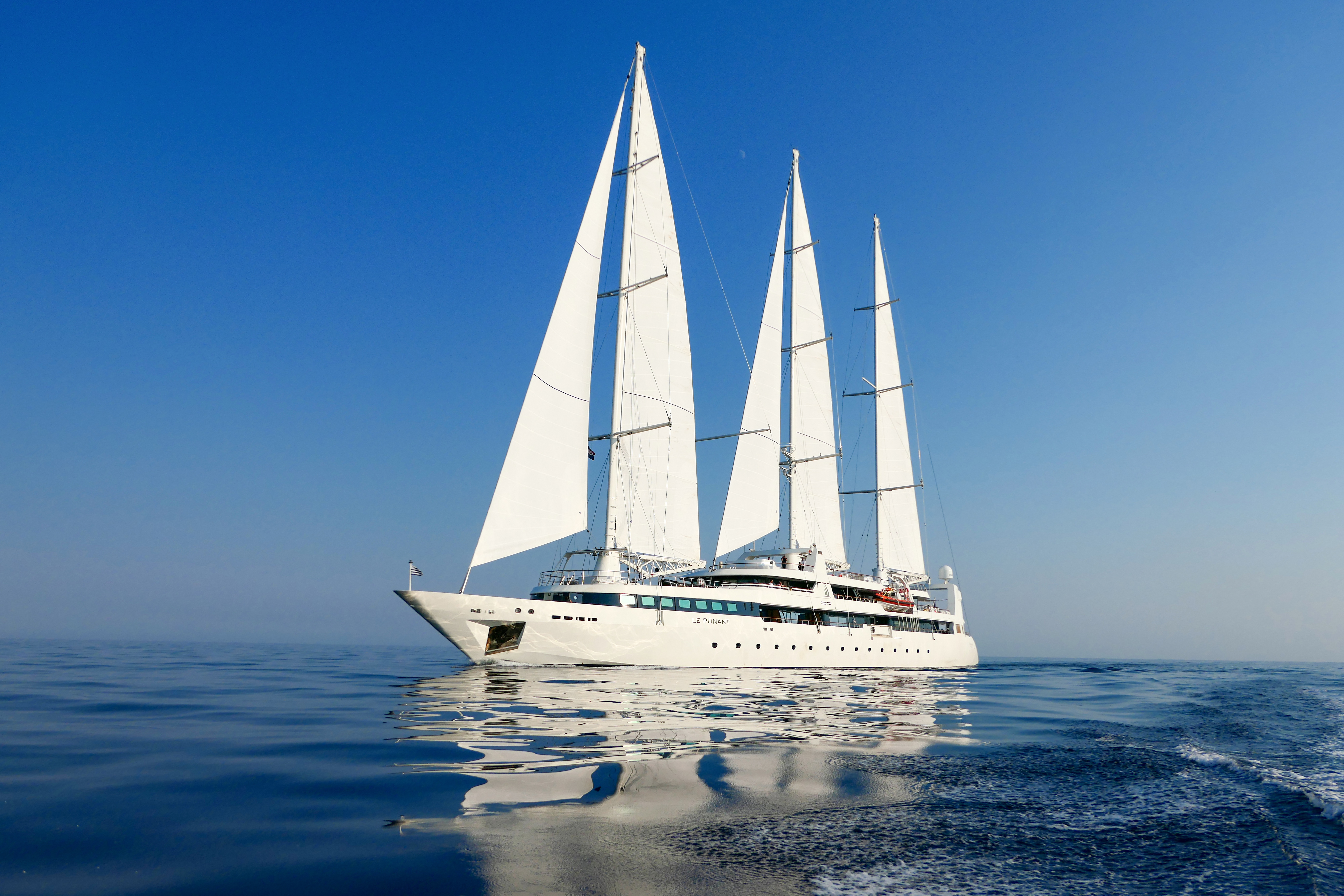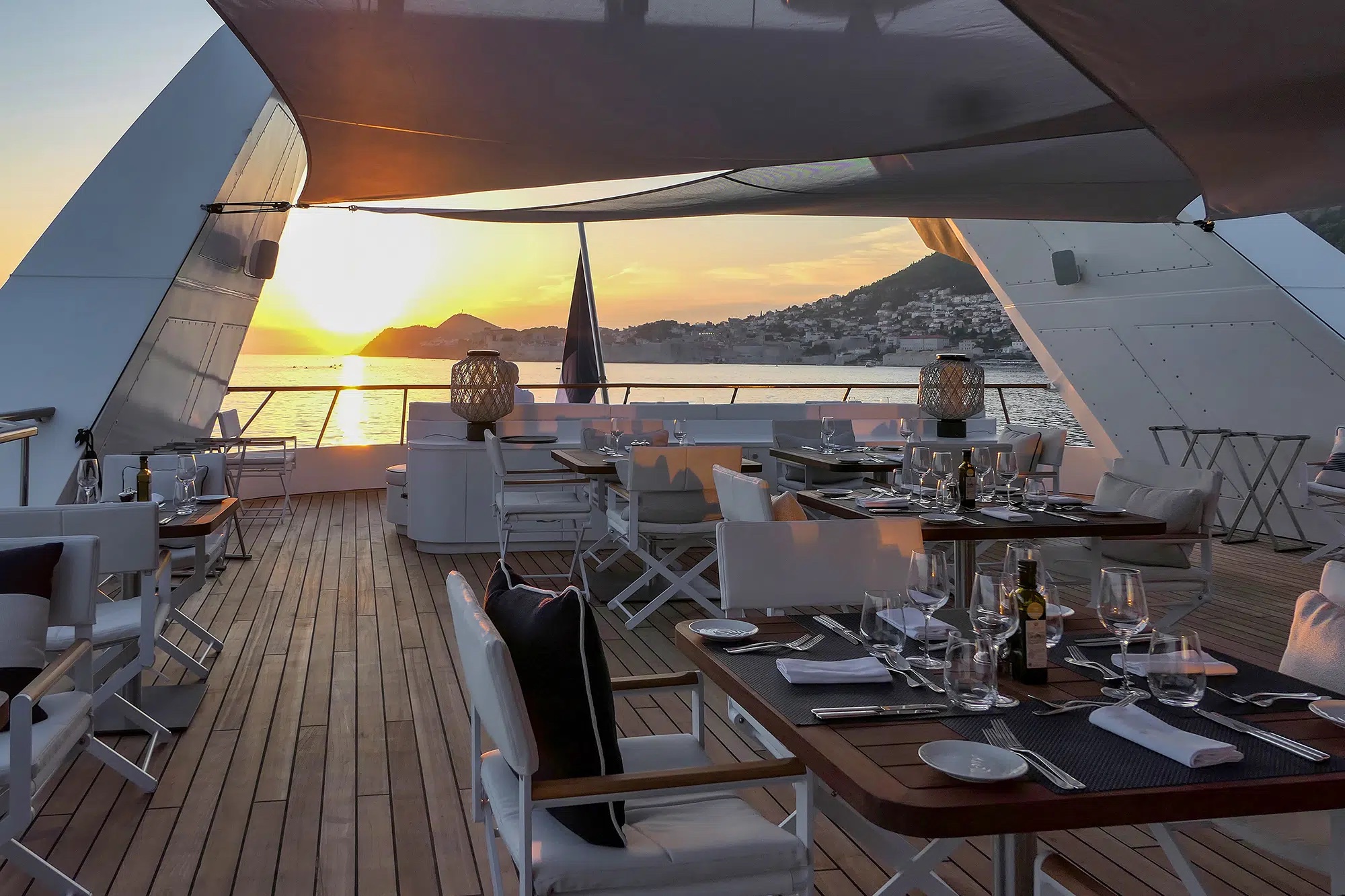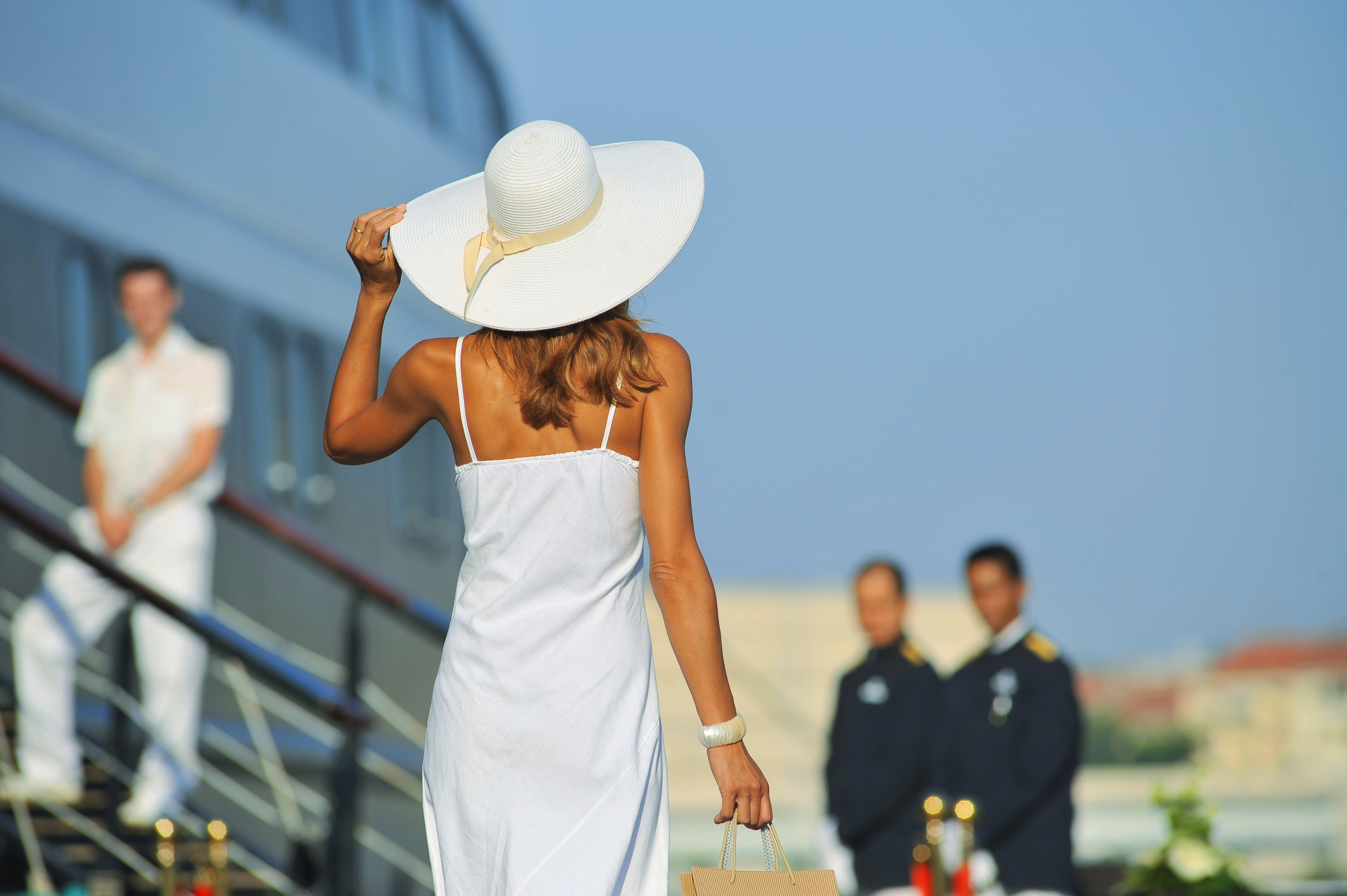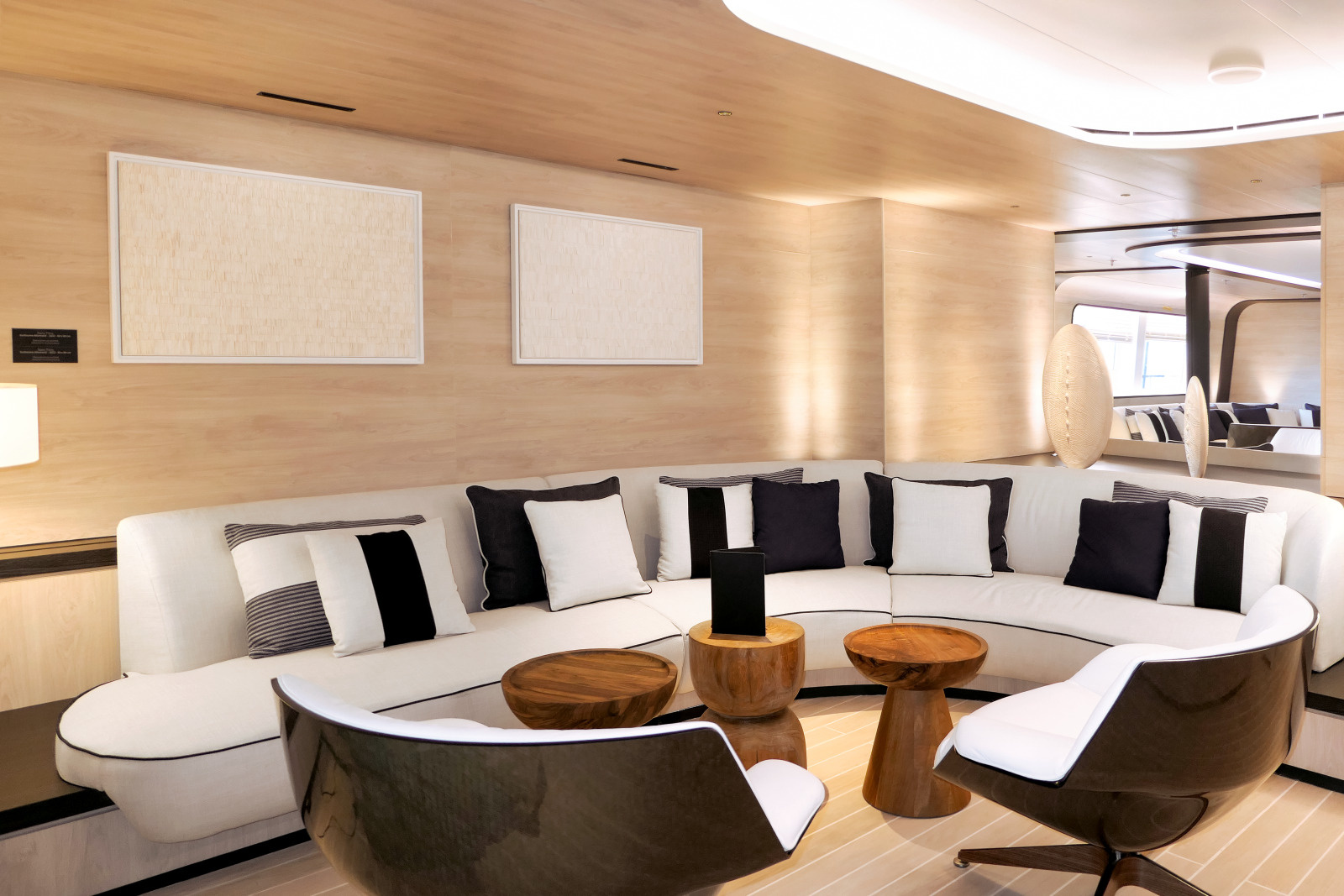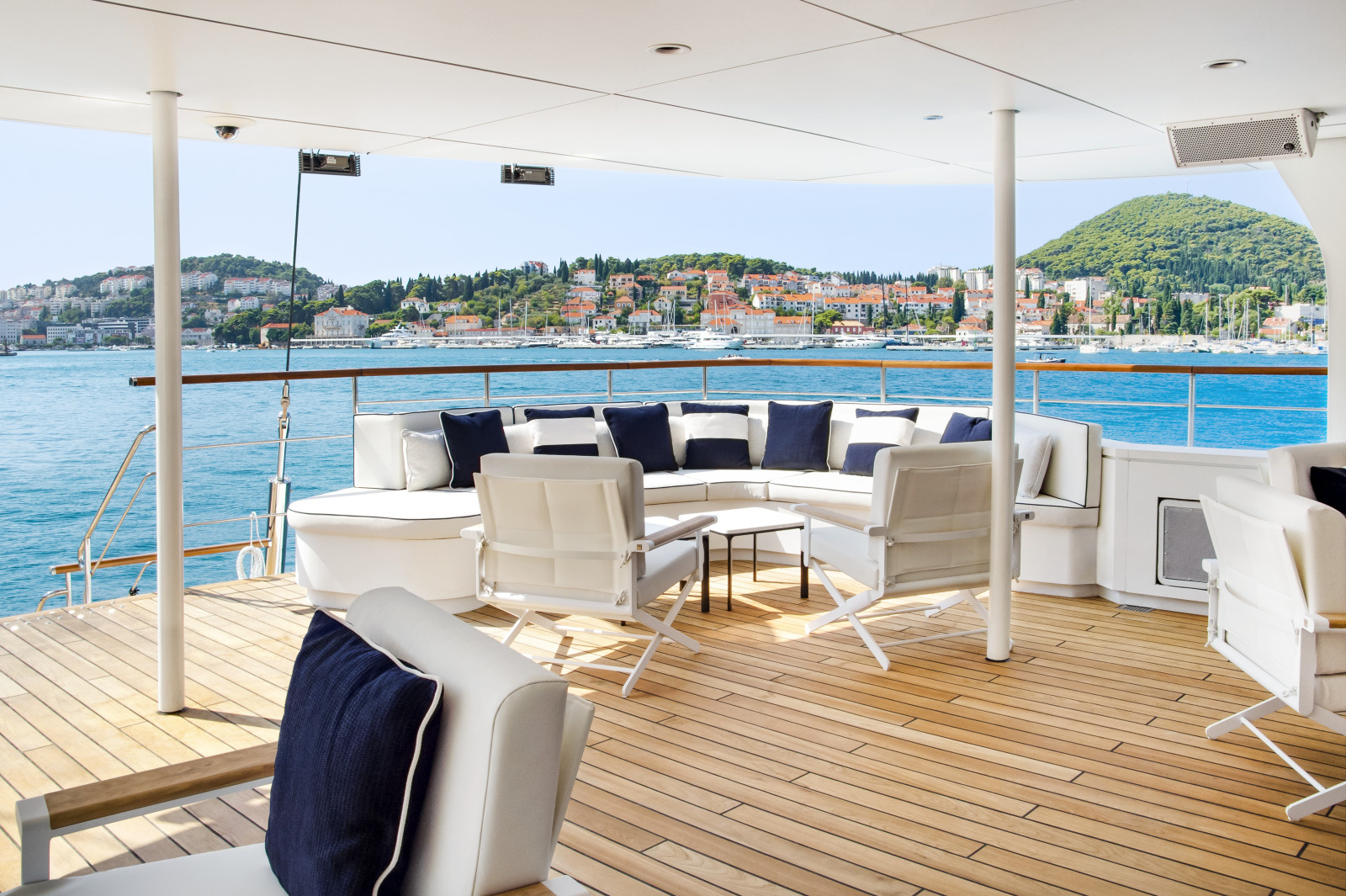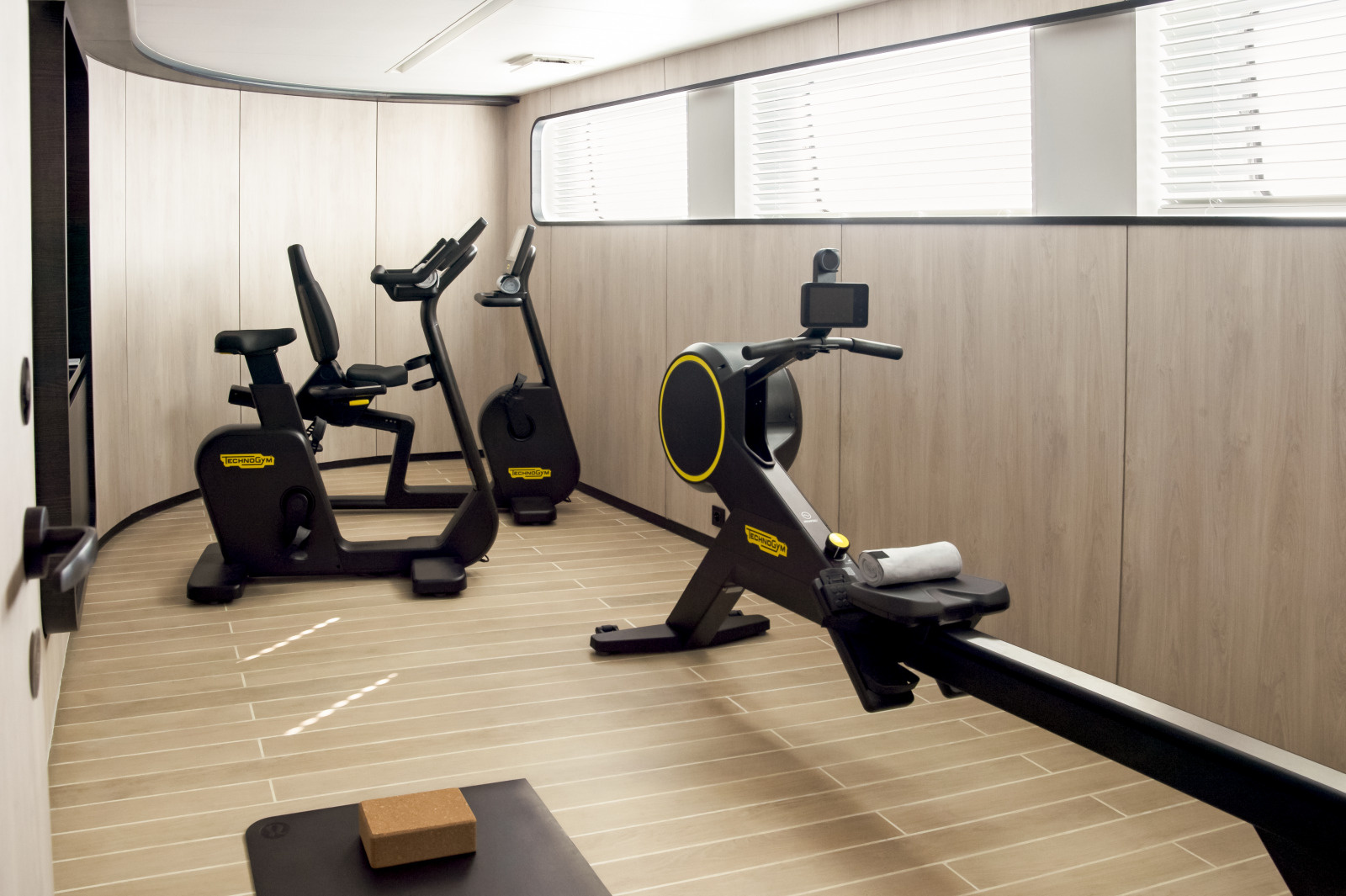Itinerary
This warm city is located in Guadeloupe and offers a choice of activities and places to visit for all the family. From markets to educational theme parks, children and adults alike will find something to entertain them.
This small group of islands lies opposite the western part of Guadeloupe. They were discovered in November 1493 by Columbus, who named them Los Santos. French settlers established themselves in 1648 and changed the name to Iles des Saintes, commonly known as Les Saintes. Since then the islands have been closely connected with Guadeloupe. Until a recent influx of tourism, Les Saintes were among the Caribbean’s most unspoiled destinations. Only two of the eight islands are inhabited: Terre-de-Bas and Terre-de-Haut. The latter is known for its impressive Fort Napoleon built in the early 19th century to replace an earlier 17th-century fort. From its vantage point there are fine views of the many tiny islets scattered in the bay and across to Guadeloupe. Terre-de-Haut is the main island of Les Saintes, with steeply scarped hills, scenic valleys, hidden coves and beautiful beaches. Its main settlement consists of a charming village of red-roofed houses situated along a curving bay. A number of small boutiques and gift shops invite browsing. Quaint cafés and restaurants offer food and drink. To the east of the village lies Grande Anse, a fine sand beach. Most of the attractions on this small island can be seen on foot. With just a few vehicles on the island, there are no organized tours possible. Time ashore here is at your leisure.
The British colonial influence is everywhere in pretty English Harbour. And yet, located on Antigua’s south coast, you are just minutes away from some of the loveliest beaches in the Caribbean. With its long ribbons of white sandy shores including the superbly named Rendez-Vous Bay Beach, the cold English drizzle and chimes of big ben have never been farther away! English Harbour is how the Caribbean is meant to be. Beautifully restored, the area still retains much in the way of its rich historic past. Nelson’s dockyard is absolutely not to be missed; a working dockyard that dates from the 18th century, this is part of a larger UNESCO World Heritage Site (Nelson’s Dockyard and National Park) which also contains Clarence House and Shirley Heights. Perhaps one of the best examples of British colonial development, the dockyard is named after the famous Admiral who lived on the island in the 1780’s. The fascinating naval history is palpable in all the buildings of this historic site and just a little further along you find beautifully restored warehouses that are now home to enchanting restaurants, art galleries, boutiques and hotels, all proudly stating their historic credentials on prominent, easy to read signs. Venturing beyond the “town” and you’ll find nature trails for all levels of fitness. Famous for having 365 different beaches, it is unsurprising then that a lot of Antiguan life takes place on its sandy shores. Beaches here offer all things to everyone so whether you want to rekindle the romance, indulge in some adrenaline fueled water sports, swim, snorkel or sail your way around the island, you’re sure to find you’re your own personal paradise here.
You can easily explore all of Gustavia during a two-hour stroll. Some shops close from noon to 3 or 4, so plan lunch accordingly, but stores stay open past 7 in the evening. Parking in Gustavia is a challenge, especially during vacation times. A good spot to park is rue de la République, alongside the catamarans, yachts, and sailboats.
French and Dutch have lived side by side on St. Maarten/St. Martin for hundreds of years—with no border patrols or customs between them. The French side has a more genteel ambience, more fashionable shopping, and a Continental flair. The Dutch tends to be less expensive, has casino hotels, and more nightlife. Water sports abound all over—diving, snorkeling, sailing, and windsurfing are all top draws. And it’s easy to while away the day relaxing on one of the 37 beaches, strolling the boardwalk of Dutch-side Philipsburg, and exploring the very French town of Marigot. Although luck is an important commodity at St. Maarten’s 13 casinos, chance plays no part in finding a good meal at the island’s excellent eateries. The best way to explore St. Maarten/St. Martin is by car. Though often congested, especially around Philipsburg and Marigot, the roads are fairly good, though narrow and winding, with some speed bumps, potholes, roundabouts, and an occasional wandering goat herd. Few roads are marked with their names, but destination signs are common. Besides, the island is so small that it’s hard to get really lost—at least that is what locals tell you. If you’re spending a few days, get to know the area with a scenic “loop” around the island. Be sure to pack a towel and some water shoes, a hat, sunglasses, and sunblock. Head up the east shoreline from Philipsburg, and follow the signs to Dawn Beach and Oyster Pond. The road winds past soaring hills, turquoise waters, quaint West Indian houses, and wonderful views of St. Barth. As you cross over to the French side, turn into Le Galion for a stop at the calm sheltered beach, the stables, the butterflies, or the windsurfing school, then keep following the road toward Orient Bay, the St-Tropez of the Caribbean. Continue to Anse Marcel, Grand Case, Marigot, and Sandy Ground. From Marigot, the flat island of Anguilla is visible. Completing the loop brings you past Cupecoy Beach, through Maho and Simpson Bay, where Saba looms in the horizon, and back over the mountain road into Philipsburg.
French and Dutch have lived side by side on St. Maarten/St. Martin for hundreds of years—with no border patrols or customs between them. The French side has a more genteel ambience, more fashionable shopping, and a Continental flair. The Dutch tends to be less expensive, has casino hotels, and more nightlife. Water sports abound all over—diving, snorkeling, sailing, and windsurfing are all top draws. And it’s easy to while away the day relaxing on one of the 37 beaches, strolling the boardwalk of Dutch-side Philipsburg, and exploring the very French town of Marigot. Although luck is an important commodity at St. Maarten’s 13 casinos, chance plays no part in finding a good meal at the island’s excellent eateries. The best way to explore St. Maarten/St. Martin is by car. Though often congested, especially around Philipsburg and Marigot, the roads are fairly good, though narrow and winding, with some speed bumps, potholes, roundabouts, and an occasional wandering goat herd. Few roads are marked with their names, but destination signs are common. Besides, the island is so small that it’s hard to get really lost—at least that is what locals tell you. If you’re spending a few days, get to know the area with a scenic “loop” around the island. Be sure to pack a towel and some water shoes, a hat, sunglasses, and sunblock. Head up the east shoreline from Philipsburg, and follow the signs to Dawn Beach and Oyster Pond. The road winds past soaring hills, turquoise waters, quaint West Indian houses, and wonderful views of St. Barth. As you cross over to the French side, turn into Le Galion for a stop at the calm sheltered beach, the stables, the butterflies, or the windsurfing school, then keep following the road toward Orient Bay, the St-Tropez of the Caribbean. Continue to Anse Marcel, Grand Case, Marigot, and Sandy Ground. From Marigot, the flat island of Anguilla is visible. Completing the loop brings you past Cupecoy Beach, through Maho and Simpson Bay, where Saba looms in the horizon, and back over the mountain road into Philipsburg.
Ship features
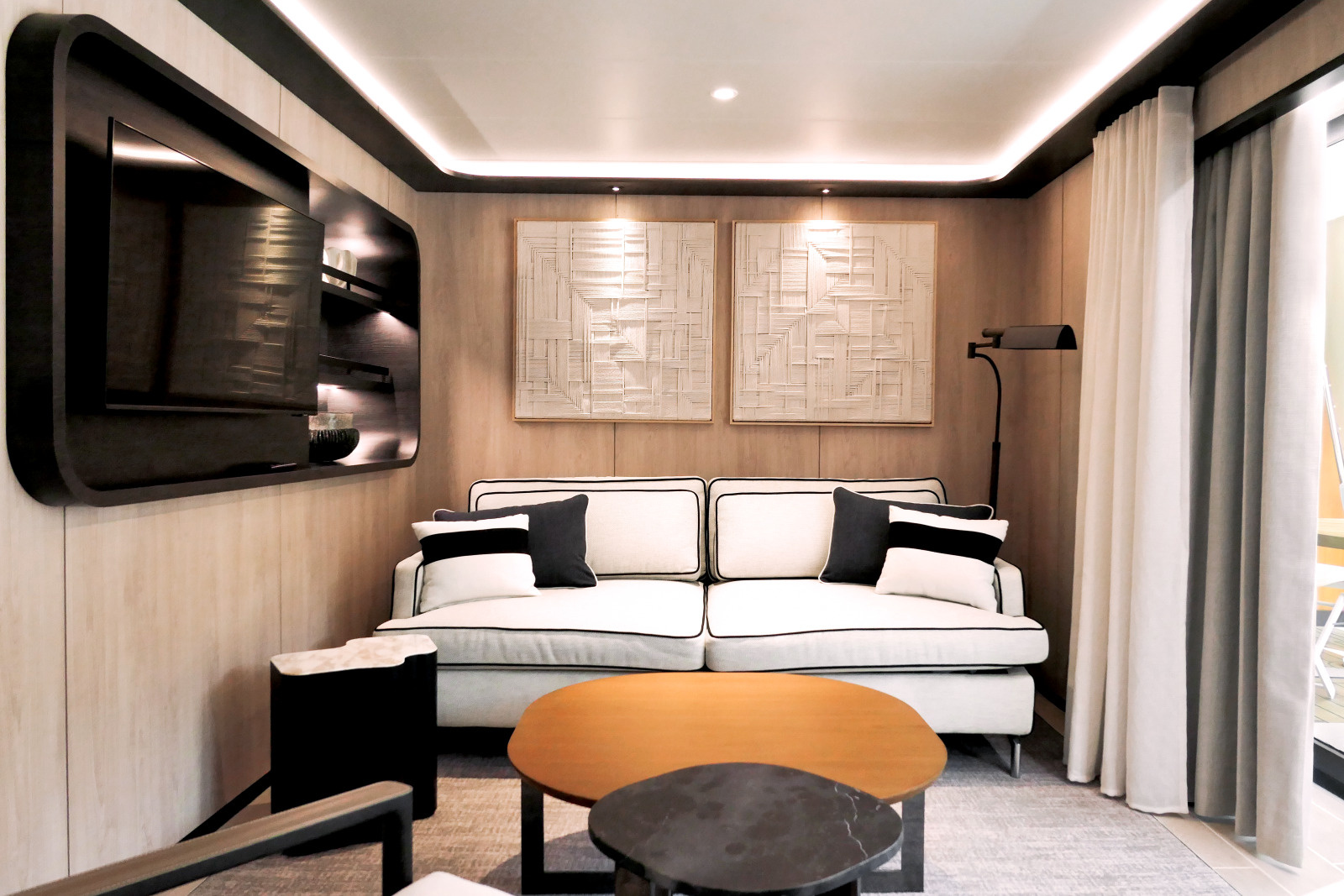
Owner's Suite with balcony
- Individually controlled air conditioning
- Double bed (180 cm x 200 cm) or twin single beds (90 cm x 200 cm), depending on the cabin; adjoining cabins available (for child-friendly cruises)
- Mini bar
- Flat screen TV, satellite channels
- Bose™ Bluetooth Speaker
- Desk with writing supplies
- Electronic safe
- Selection of Dyptique Paris bath products
- Dressing table and hairdryer
- Direct phone line via satellite
- 110/220 volt outlets
- 24-hour room service
- Unlimited free Wi-Fi

Alizé Privilège Suite with balcony
- Individually controlled air conditioning
- Double bed (180 cm x 200 cm) or twin single beds (90 cm x 200 cm), depending on the cabin; adjoining cabins available (for child-friendly cruises)
- Mini bar
- Flat screen TV, satellite channels
- Bose™ Bluetooth Speaker
- Desk with writing supplies
- Electronic safe
- Selection of Dyptique Paris bath products
- Dressing table and hairdryer
- Direct phone line via satellite
- 110/220 volt outlets
- 24-hour room service
- Unlimited free Wi-Fi
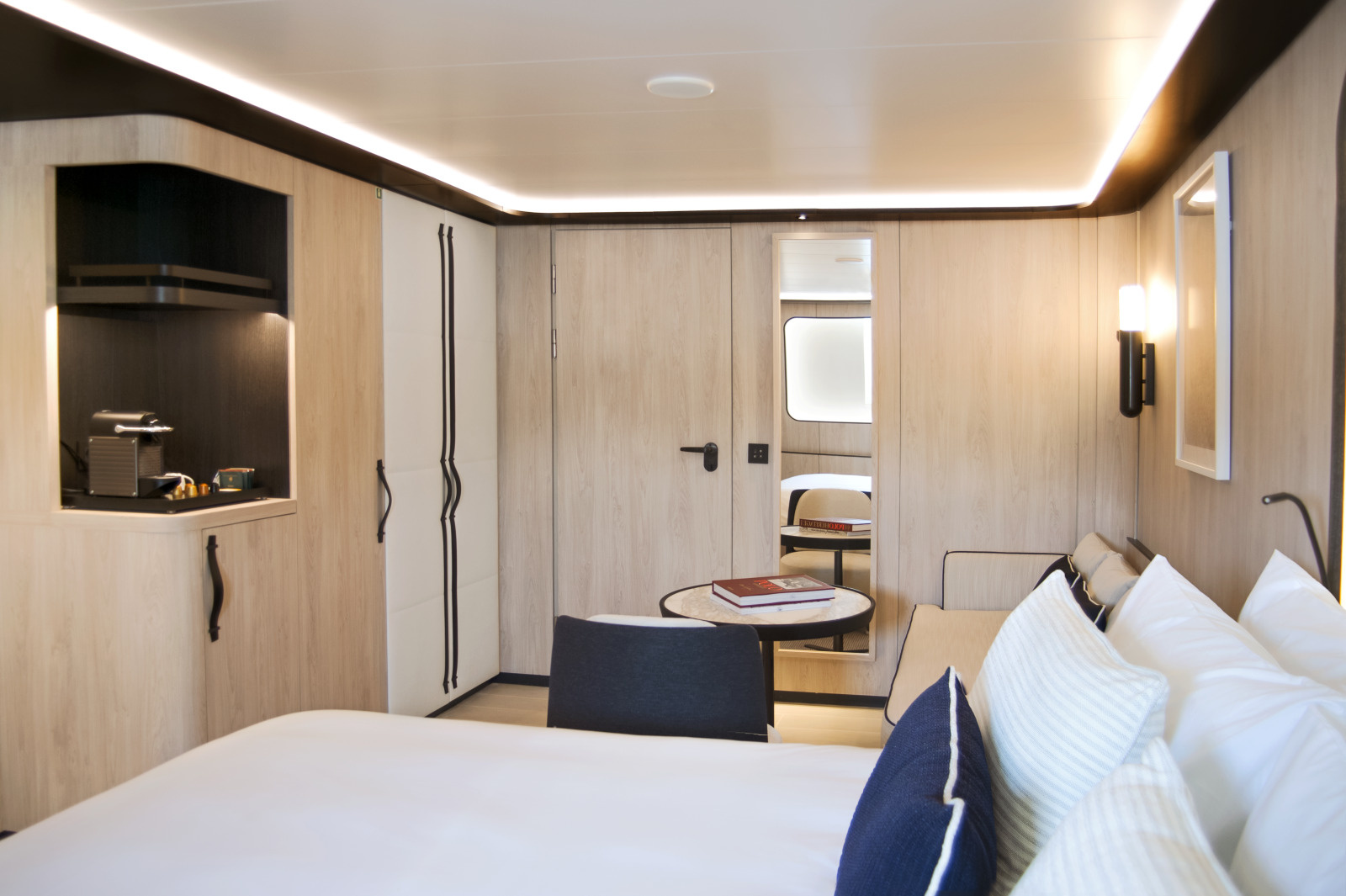
Mistral Junior Suite
- Individually controlled air conditioning
- Double bed (180 cm x 200 cm) or twin single beds (90 cm x 200 cm), depending on the cabin; adjoining cabins available (for child-friendly cruises)
- Mini bar
- Flat screen TV, satellite channels
- Bose™ Bluetooth Speaker
- Desk with writing supplies
- Electronic safe
- Selection of Dyptique Paris bath products
- Dressing table and hairdryer
- Direct phone line via satellite
- 110/220 volt outlets
- 24-hour room service
- Unlimited free Wi-Fi
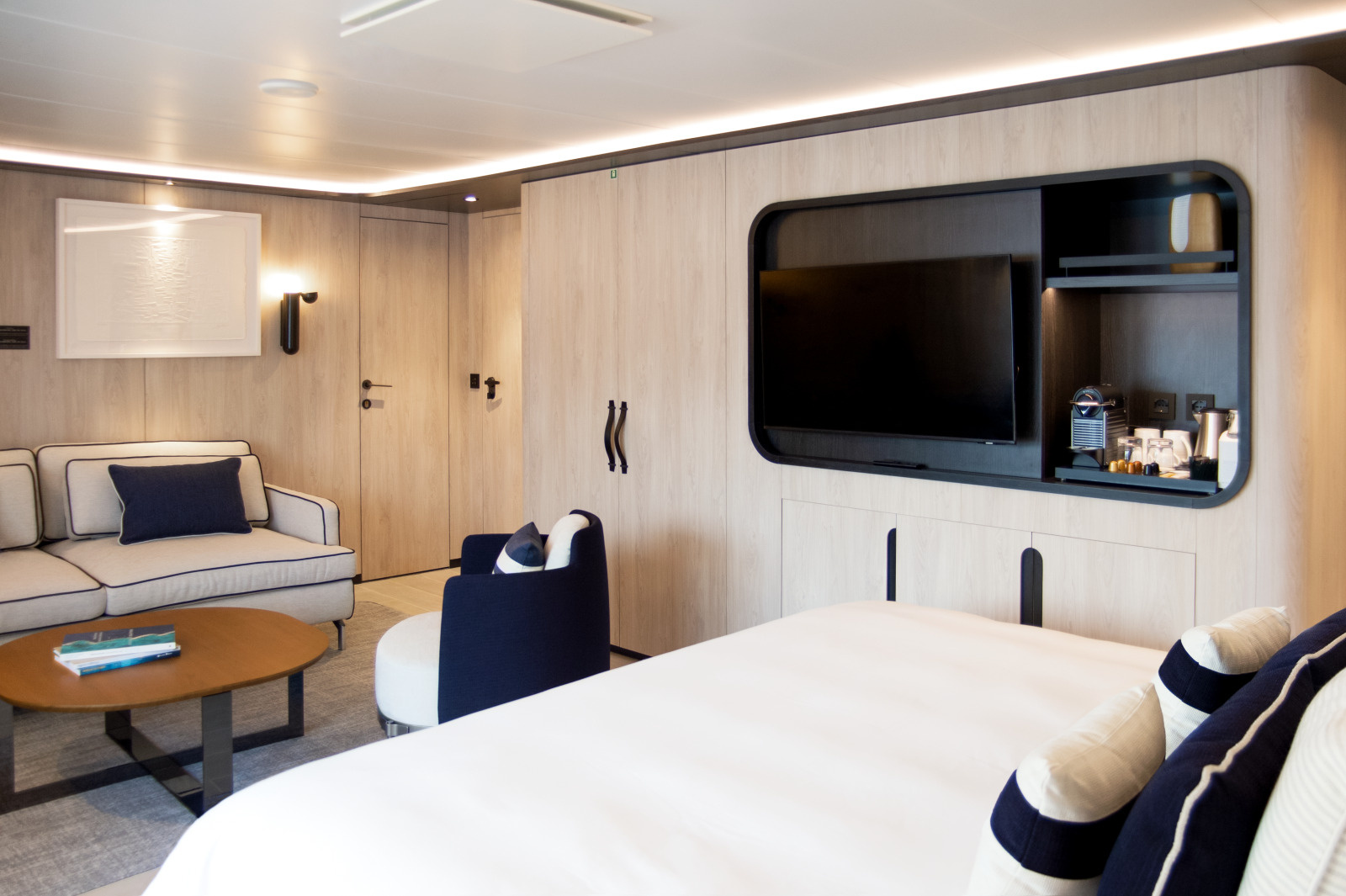
Grand Privilège Alizé Suite with balcony
- Individually controlled air conditioning
- Double bed (180 cm x 200 cm) or twin single beds (90 cm x 200 cm), depending on the cabin; adjoining cabins available (for child-friendly cruises)
- Mini bar
- Flat screen TV, satellite channels
- Bose™ Bluetooth Speaker
- Desk with writing supplies
- Electronic safe
- Selection of Dyptique Paris bath products
- Dressing table and hairdryer
- Direct phone line via satellite
- 110/220 volt outlets
- 24-hour room service
- Unlimited free Wi-Fi
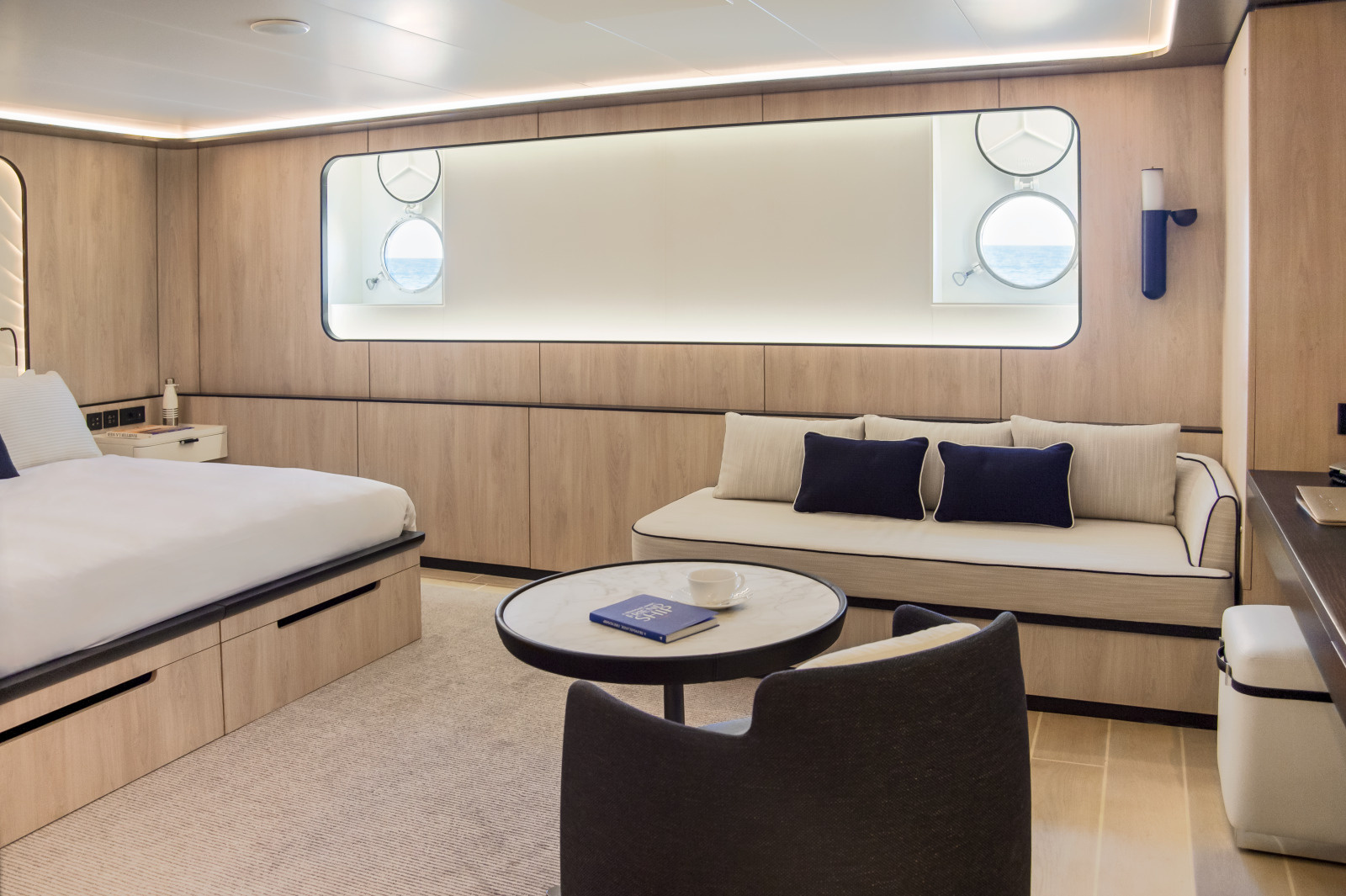
Mistral Prestige Suite
- Individually controlled air conditioning
- Double bed (180 cm x 200 cm) or twin single beds (90 cm x 200 cm), depending on the cabin; adjoining cabins available (for child-friendly cruises)
- Mini bar
- Flat screen TV, satellite channels
- Bose™ Bluetooth Speaker
- Desk with writing supplies
- Electronic safe
- Selection of Dyptique Paris bath products
- Dressing table and hairdryer
- Direct phone line via satellite
- 110/220 volt outlets
- 24-hour room service
- Unlimited free Wi-Fi

Alizés Prestige Stateroom with balcony
- Individually controlled air conditioning
- Double bed (180 cm x 200 cm) or twin single beds (90 cm x 200 cm), depending on the cabin; adjoining cabins available (for child-friendly cruises)
- Mini bar
- Flat screen TV, satellite channels
- Bose™ Bluetooth Speaker
- Desk with writing supplies
- Electronic safe
- Selection of Dyptique Paris bath products
- Dressing table and hairdryer
- Direct phone line via satellite
- 110/220 volt outlets
- 24-hour room service
- Unlimited free Wi-Fi
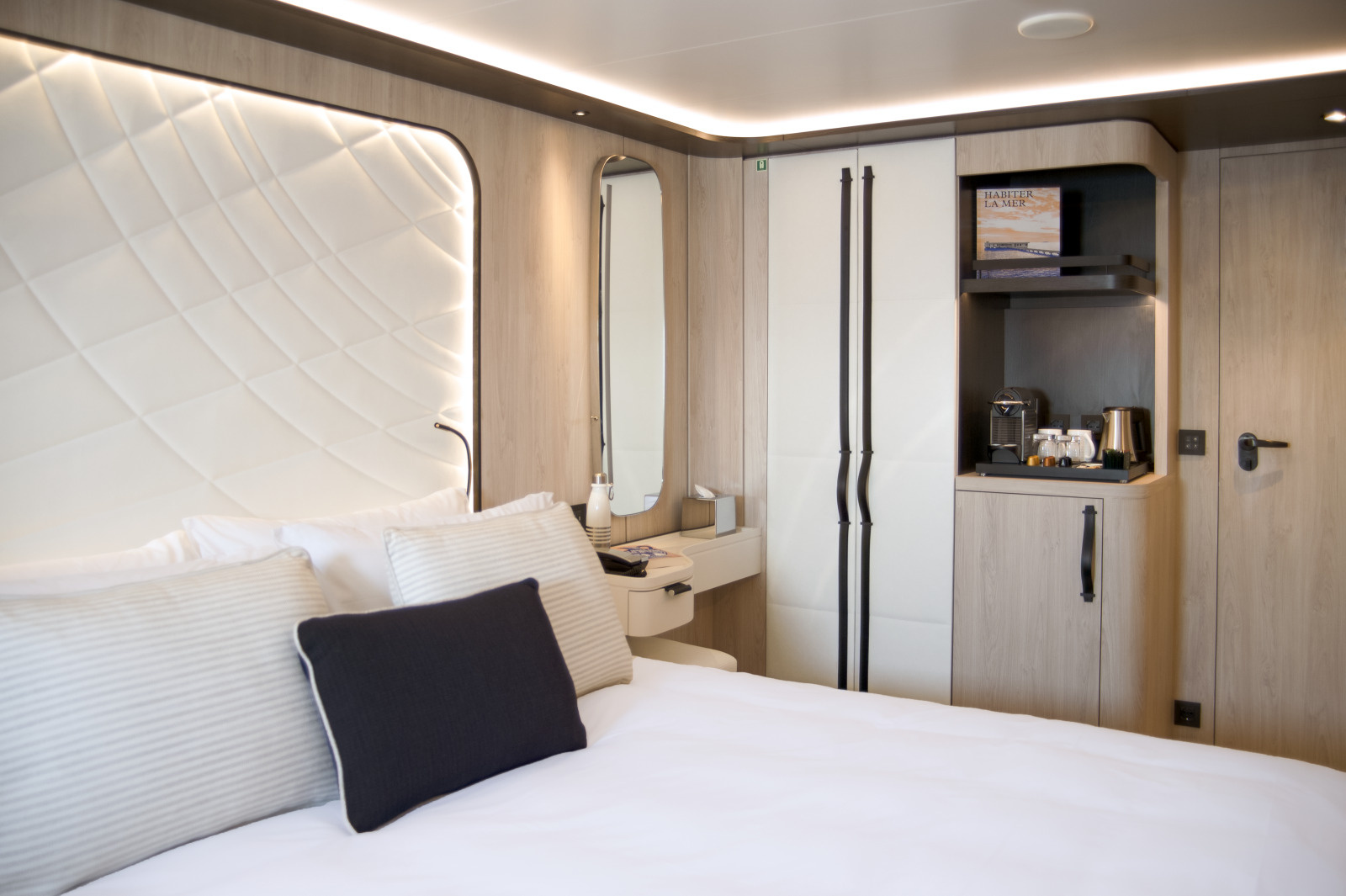
Mistral Prestige Stateroom
- Individually controlled air conditioning
- Double bed (180 cm x 200 cm) or twin single beds (90 cm x 200 cm), depending on the cabin; adjoining cabins available (for child-friendly cruises)
- Mini bar
- Flat screen TV, satellite channels
- Bose™ Bluetooth Speaker
- Desk with writing supplies
- Electronic safe
- Selection of Dyptique Paris bath products
- Dressing table and hairdryer
- Direct phone line via satellite
- 110/220 volt outlets
- 24-hour room service
- Unlimited free Wi-Fi
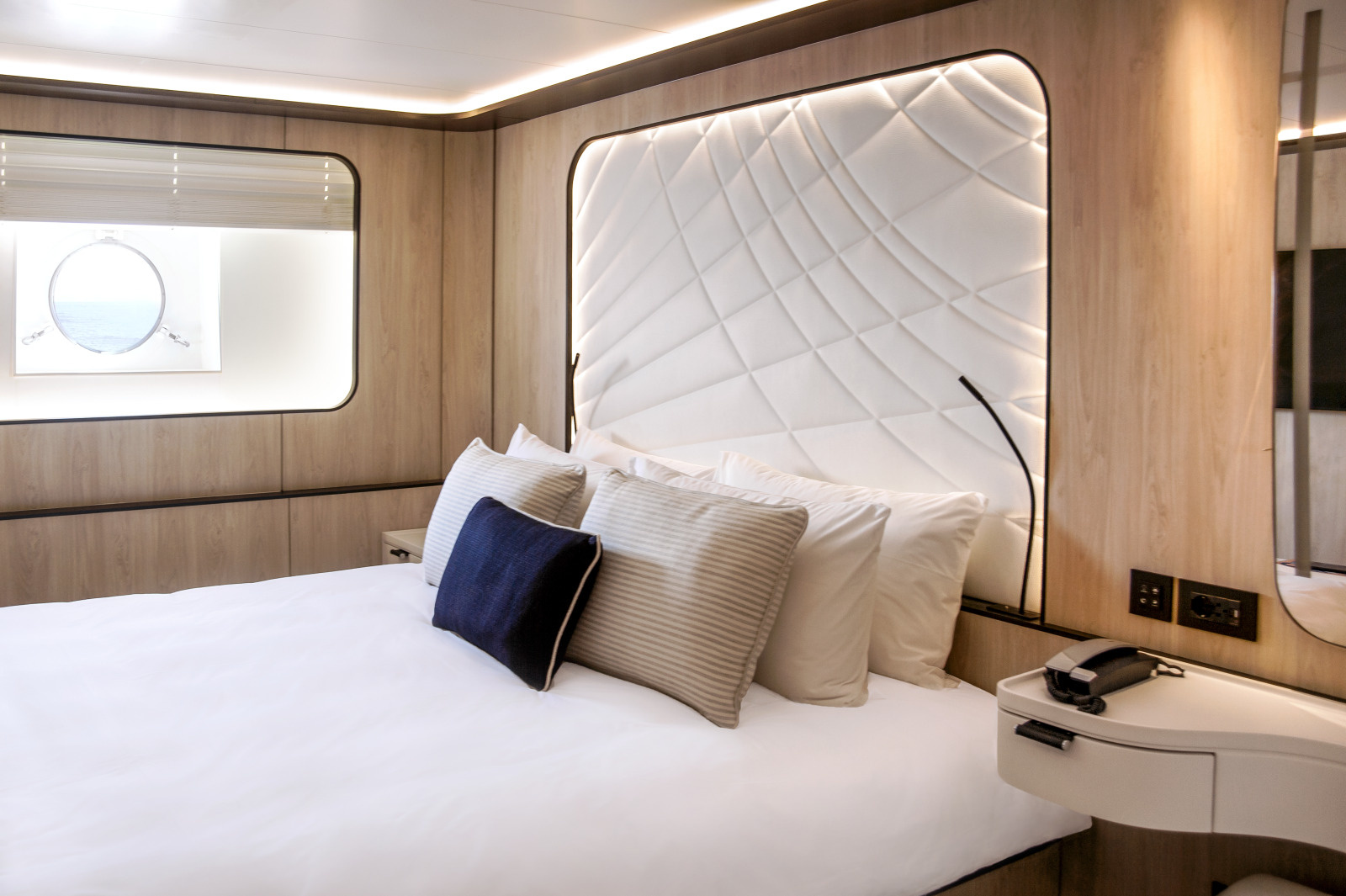
Mistral Stateroom
- Individually controlled air conditioning
- Double bed (180 cm x 200 cm) or twin single beds (90 cm x 200 cm), depending on the cabin; adjoining cabins available (for child-friendly cruises)
- Mini bar
- Flat screen TV, satellite channels
- Bose™ Bluetooth Speaker
- Desk with writing supplies
- Electronic safe
- Selection of Dyptique Paris bath products
- Dressing table and hairdryer
- Direct phone line via satellite
- 110/220 volt outlets
- 24-hour room service
- Unlimited free Wi-Fi

Alizé Stateroom with balcony
- Individually controlled air conditioning
- Double bed (180 cm x 200 cm) or twin single beds (90 cm x 200 cm), depending on the cabin; adjoining cabins available (for child-friendly cruises)
- Mini bar
- Flat screen TV, satellite channels
- Bose™ Bluetooth Speaker
- Desk with writing supplies
- Electronic safe
- Selection of Dyptique Paris bath products
- Dressing table and hairdryer
- Direct phone line via satellite
- 110/220 volt outlets
- 24-hour room service
- Unlimited free Wi-Fi
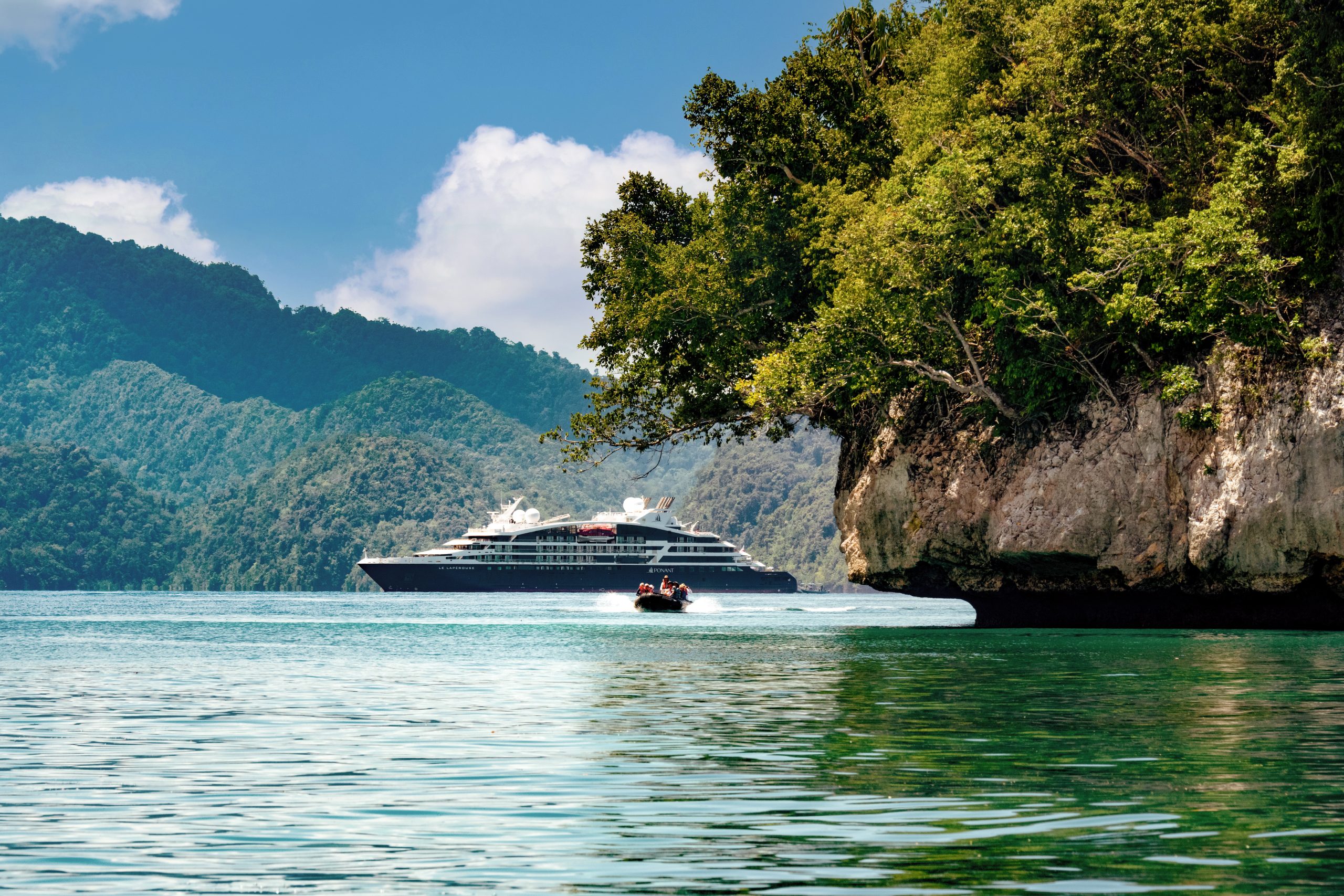
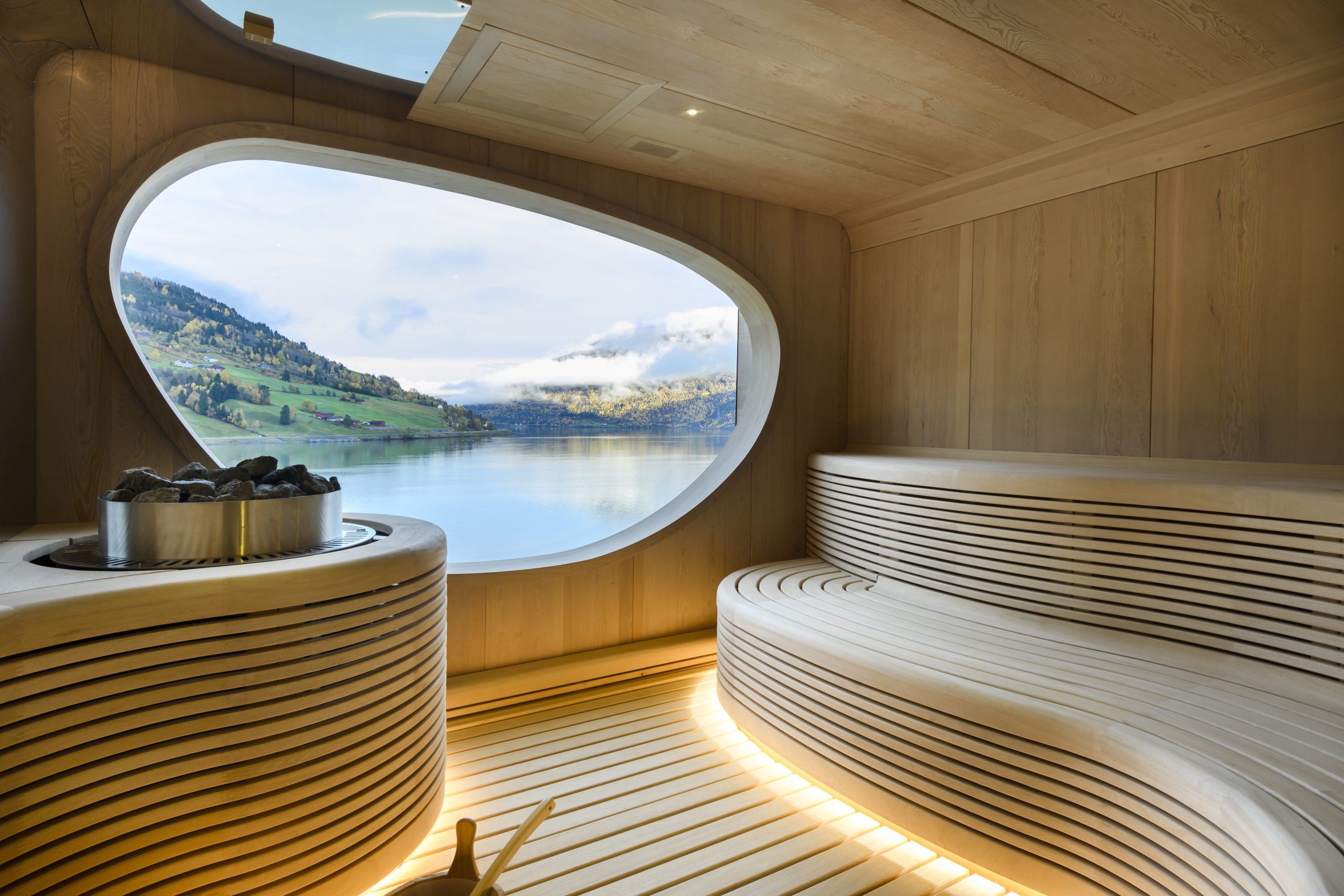
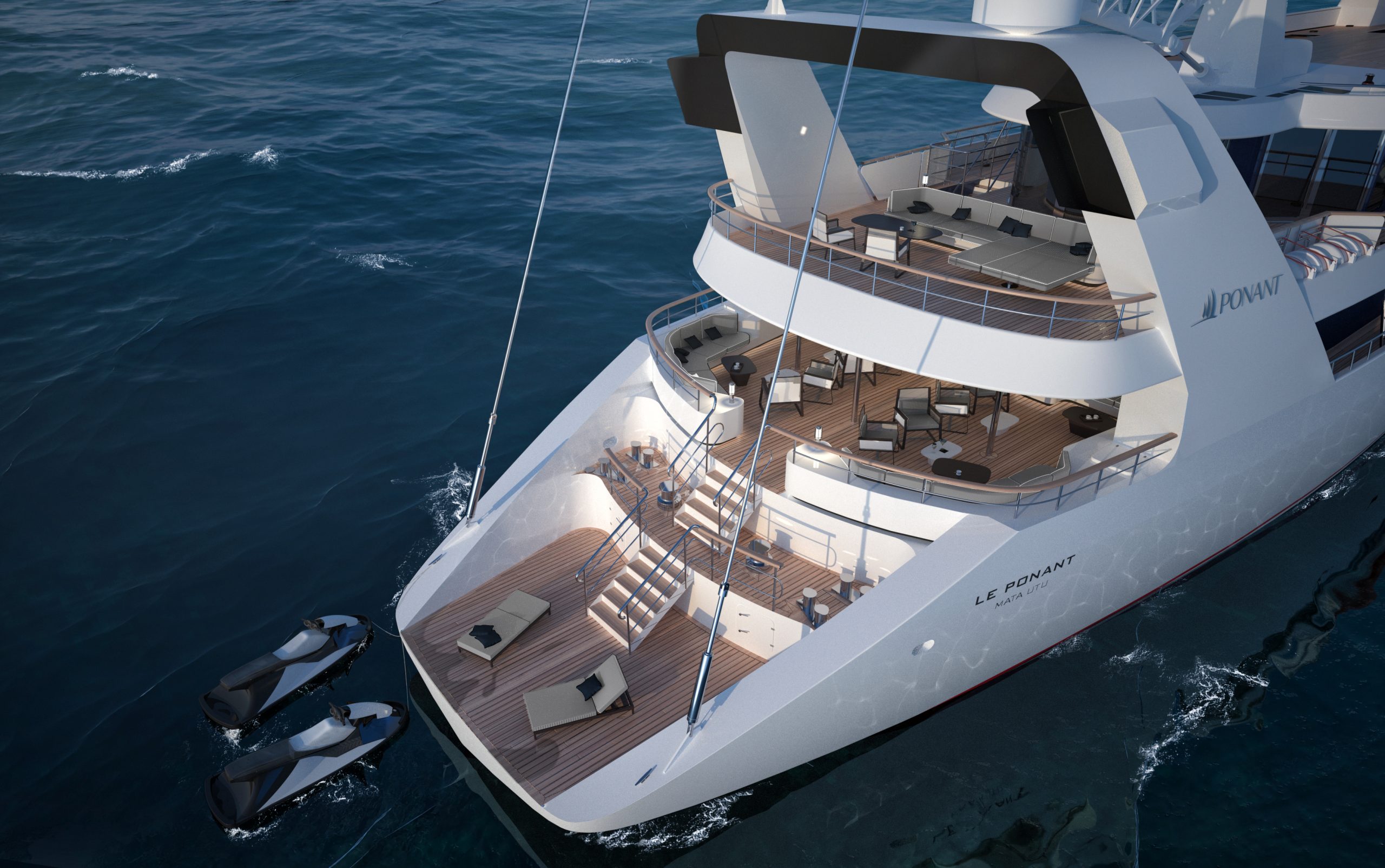
Itinerary
This warm city is located in Guadeloupe and offers a choice of activities and places to visit for all the family. From markets to educational theme parks, children and adults alike will find something to entertain them.
This small group of islands lies opposite the western part of Guadeloupe. They were discovered in November 1493 by Columbus, who named them Los Santos. French settlers established themselves in 1648 and changed the name to Iles des Saintes, commonly known as Les Saintes. Since then the islands have been closely connected with Guadeloupe. Until a recent influx of tourism, Les Saintes were among the Caribbean’s most unspoiled destinations. Only two of the eight islands are inhabited: Terre-de-Bas and Terre-de-Haut. The latter is known for its impressive Fort Napoleon built in the early 19th century to replace an earlier 17th-century fort. From its vantage point there are fine views of the many tiny islets scattered in the bay and across to Guadeloupe. Terre-de-Haut is the main island of Les Saintes, with steeply scarped hills, scenic valleys, hidden coves and beautiful beaches. Its main settlement consists of a charming village of red-roofed houses situated along a curving bay. A number of small boutiques and gift shops invite browsing. Quaint cafés and restaurants offer food and drink. To the east of the village lies Grande Anse, a fine sand beach. Most of the attractions on this small island can be seen on foot. With just a few vehicles on the island, there are no organized tours possible. Time ashore here is at your leisure.
The British colonial influence is everywhere in pretty English Harbour. And yet, located on Antigua’s south coast, you are just minutes away from some of the loveliest beaches in the Caribbean. With its long ribbons of white sandy shores including the superbly named Rendez-Vous Bay Beach, the cold English drizzle and chimes of big ben have never been farther away! English Harbour is how the Caribbean is meant to be. Beautifully restored, the area still retains much in the way of its rich historic past. Nelson’s dockyard is absolutely not to be missed; a working dockyard that dates from the 18th century, this is part of a larger UNESCO World Heritage Site (Nelson’s Dockyard and National Park) which also contains Clarence House and Shirley Heights. Perhaps one of the best examples of British colonial development, the dockyard is named after the famous Admiral who lived on the island in the 1780’s. The fascinating naval history is palpable in all the buildings of this historic site and just a little further along you find beautifully restored warehouses that are now home to enchanting restaurants, art galleries, boutiques and hotels, all proudly stating their historic credentials on prominent, easy to read signs. Venturing beyond the “town” and you’ll find nature trails for all levels of fitness. Famous for having 365 different beaches, it is unsurprising then that a lot of Antiguan life takes place on its sandy shores. Beaches here offer all things to everyone so whether you want to rekindle the romance, indulge in some adrenaline fueled water sports, swim, snorkel or sail your way around the island, you’re sure to find you’re your own personal paradise here.
You can easily explore all of Gustavia during a two-hour stroll. Some shops close from noon to 3 or 4, so plan lunch accordingly, but stores stay open past 7 in the evening. Parking in Gustavia is a challenge, especially during vacation times. A good spot to park is rue de la République, alongside the catamarans, yachts, and sailboats.
French and Dutch have lived side by side on St. Maarten/St. Martin for hundreds of years—with no border patrols or customs between them. The French side has a more genteel ambience, more fashionable shopping, and a Continental flair. The Dutch tends to be less expensive, has casino hotels, and more nightlife. Water sports abound all over—diving, snorkeling, sailing, and windsurfing are all top draws. And it’s easy to while away the day relaxing on one of the 37 beaches, strolling the boardwalk of Dutch-side Philipsburg, and exploring the very French town of Marigot. Although luck is an important commodity at St. Maarten’s 13 casinos, chance plays no part in finding a good meal at the island’s excellent eateries. The best way to explore St. Maarten/St. Martin is by car. Though often congested, especially around Philipsburg and Marigot, the roads are fairly good, though narrow and winding, with some speed bumps, potholes, roundabouts, and an occasional wandering goat herd. Few roads are marked with their names, but destination signs are common. Besides, the island is so small that it’s hard to get really lost—at least that is what locals tell you. If you’re spending a few days, get to know the area with a scenic “loop” around the island. Be sure to pack a towel and some water shoes, a hat, sunglasses, and sunblock. Head up the east shoreline from Philipsburg, and follow the signs to Dawn Beach and Oyster Pond. The road winds past soaring hills, turquoise waters, quaint West Indian houses, and wonderful views of St. Barth. As you cross over to the French side, turn into Le Galion for a stop at the calm sheltered beach, the stables, the butterflies, or the windsurfing school, then keep following the road toward Orient Bay, the St-Tropez of the Caribbean. Continue to Anse Marcel, Grand Case, Marigot, and Sandy Ground. From Marigot, the flat island of Anguilla is visible. Completing the loop brings you past Cupecoy Beach, through Maho and Simpson Bay, where Saba looms in the horizon, and back over the mountain road into Philipsburg.
French and Dutch have lived side by side on St. Maarten/St. Martin for hundreds of years—with no border patrols or customs between them. The French side has a more genteel ambience, more fashionable shopping, and a Continental flair. The Dutch tends to be less expensive, has casino hotels, and more nightlife. Water sports abound all over—diving, snorkeling, sailing, and windsurfing are all top draws. And it’s easy to while away the day relaxing on one of the 37 beaches, strolling the boardwalk of Dutch-side Philipsburg, and exploring the very French town of Marigot. Although luck is an important commodity at St. Maarten’s 13 casinos, chance plays no part in finding a good meal at the island’s excellent eateries. The best way to explore St. Maarten/St. Martin is by car. Though often congested, especially around Philipsburg and Marigot, the roads are fairly good, though narrow and winding, with some speed bumps, potholes, roundabouts, and an occasional wandering goat herd. Few roads are marked with their names, but destination signs are common. Besides, the island is so small that it’s hard to get really lost—at least that is what locals tell you. If you’re spending a few days, get to know the area with a scenic “loop” around the island. Be sure to pack a towel and some water shoes, a hat, sunglasses, and sunblock. Head up the east shoreline from Philipsburg, and follow the signs to Dawn Beach and Oyster Pond. The road winds past soaring hills, turquoise waters, quaint West Indian houses, and wonderful views of St. Barth. As you cross over to the French side, turn into Le Galion for a stop at the calm sheltered beach, the stables, the butterflies, or the windsurfing school, then keep following the road toward Orient Bay, the St-Tropez of the Caribbean. Continue to Anse Marcel, Grand Case, Marigot, and Sandy Ground. From Marigot, the flat island of Anguilla is visible. Completing the loop brings you past Cupecoy Beach, through Maho and Simpson Bay, where Saba looms in the horizon, and back over the mountain road into Philipsburg.
Ship features




